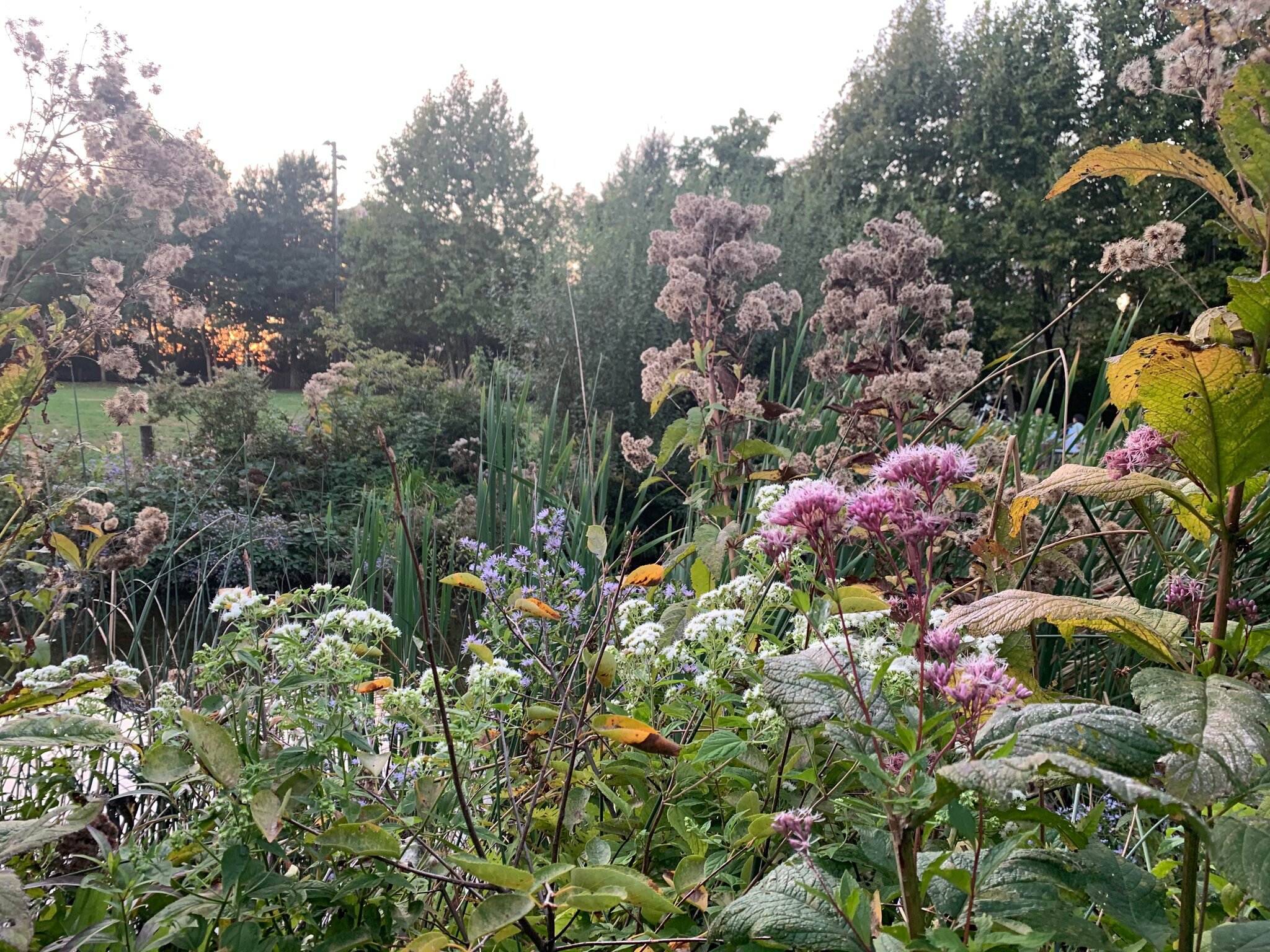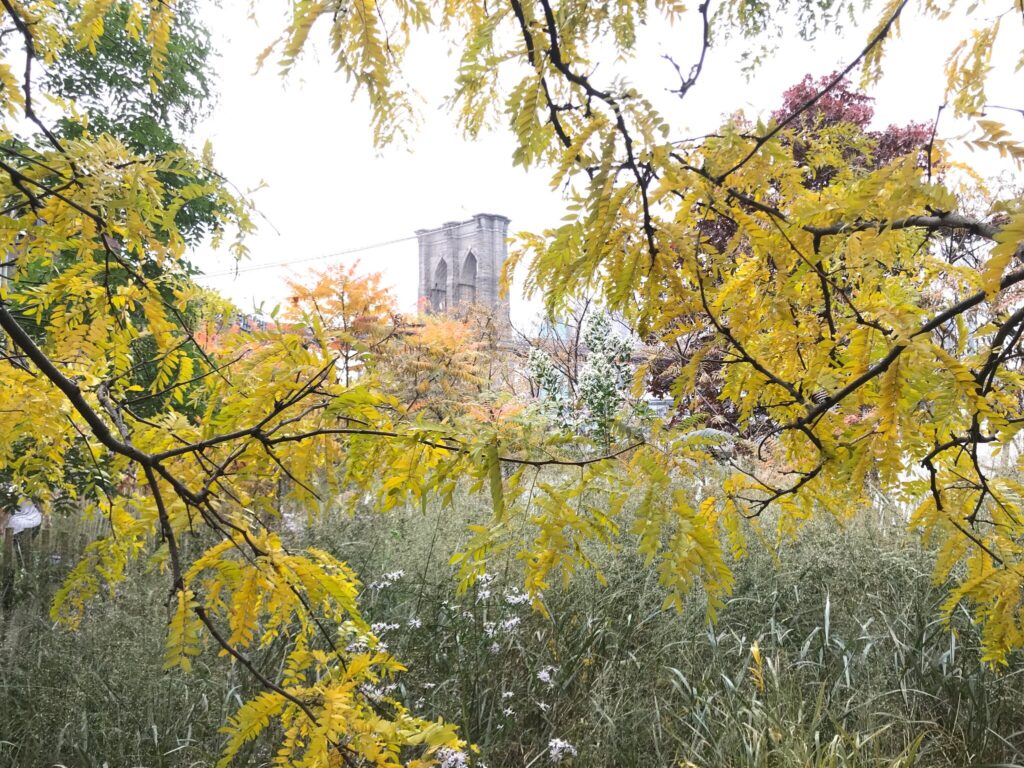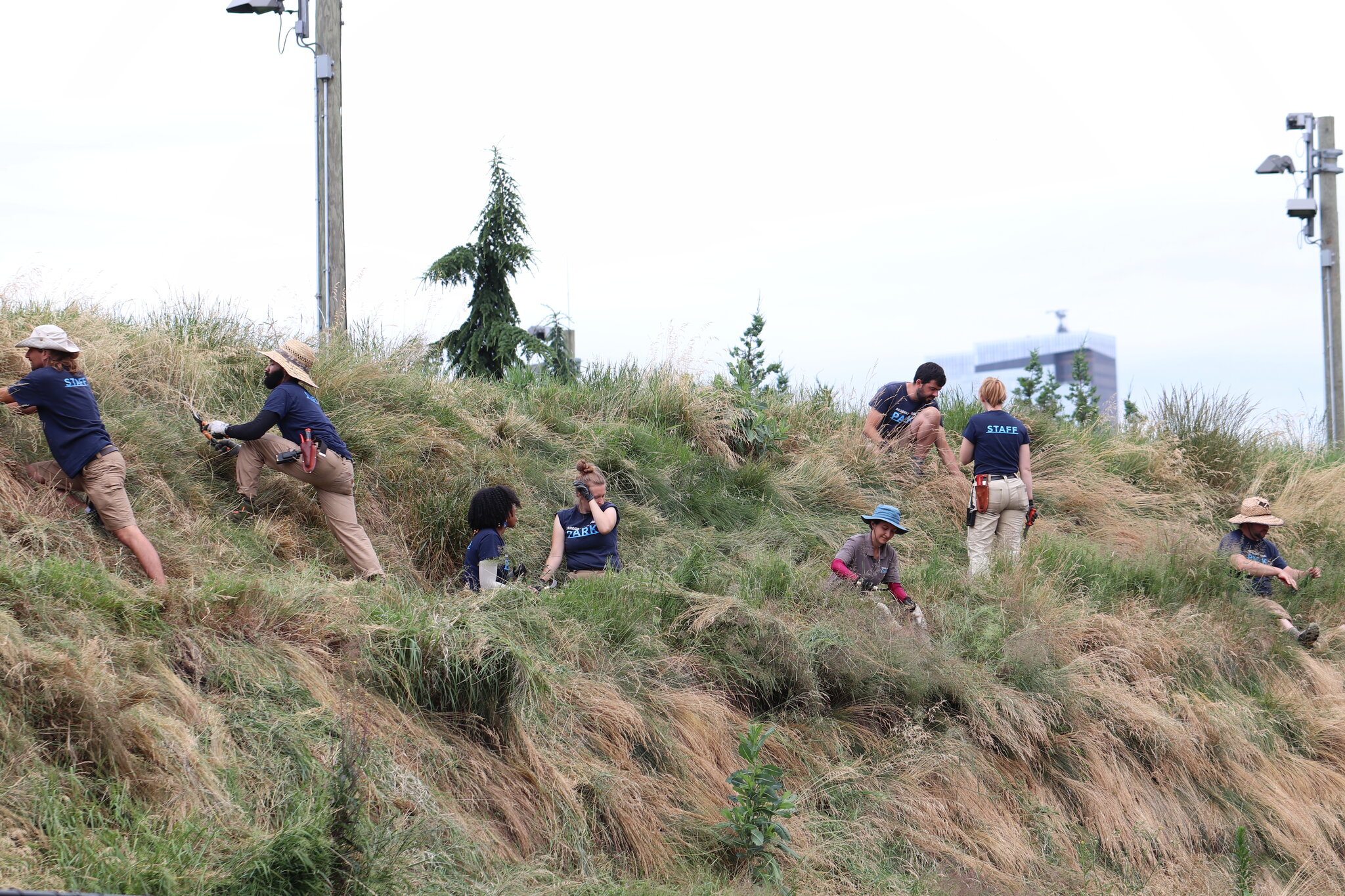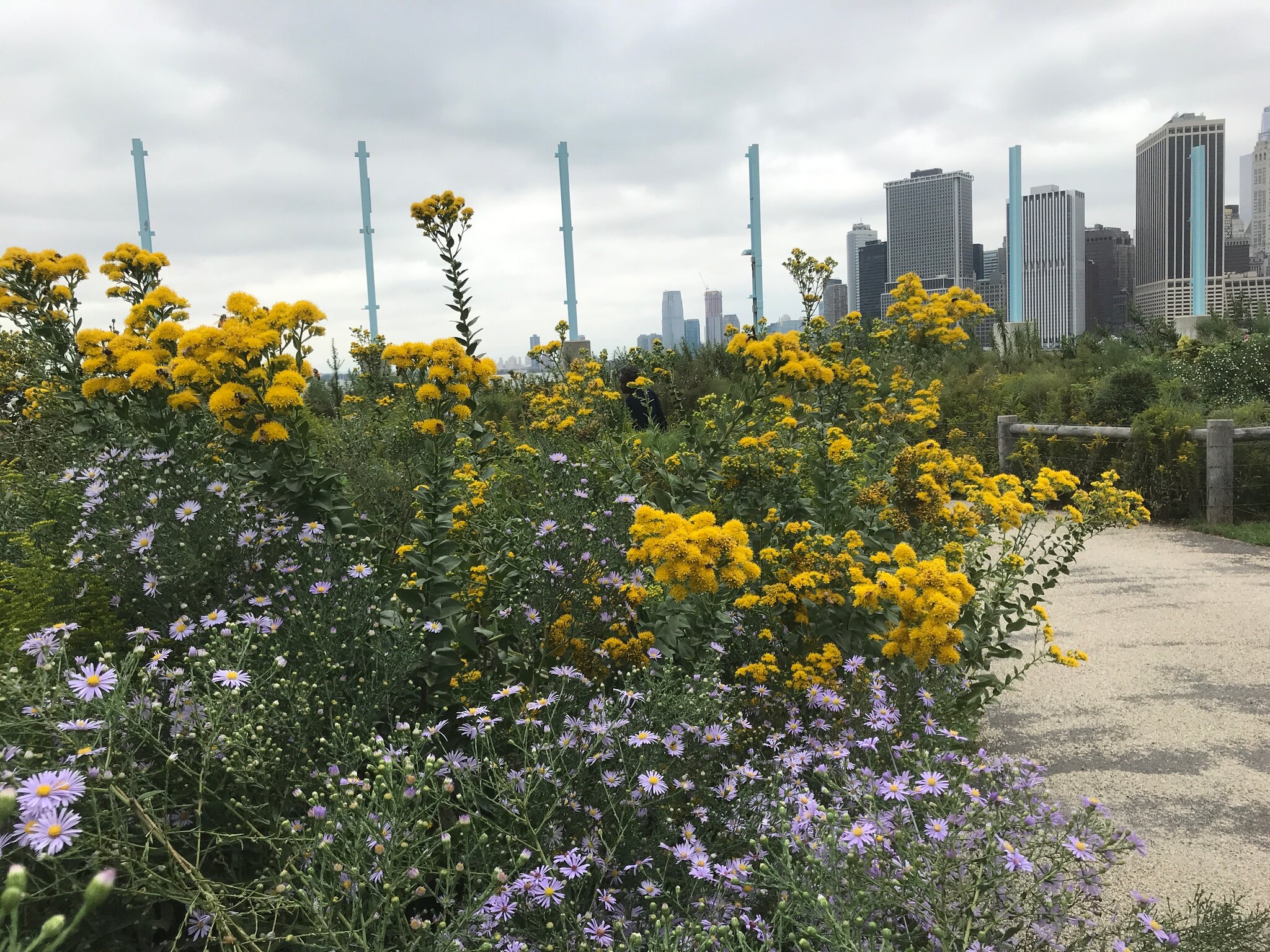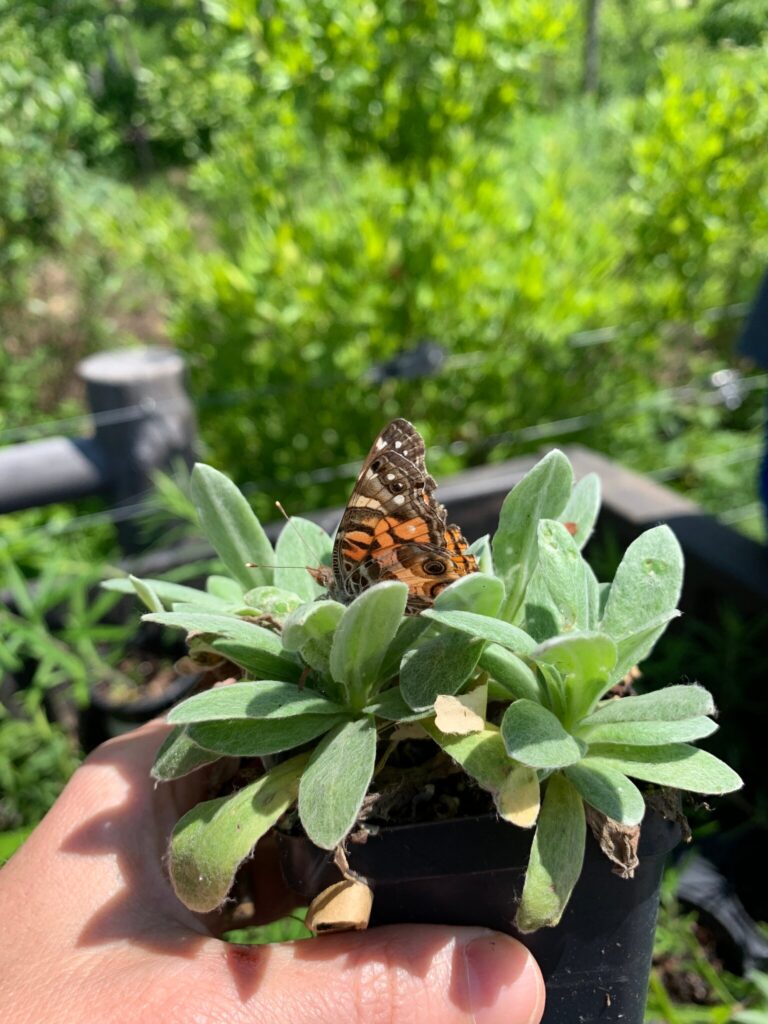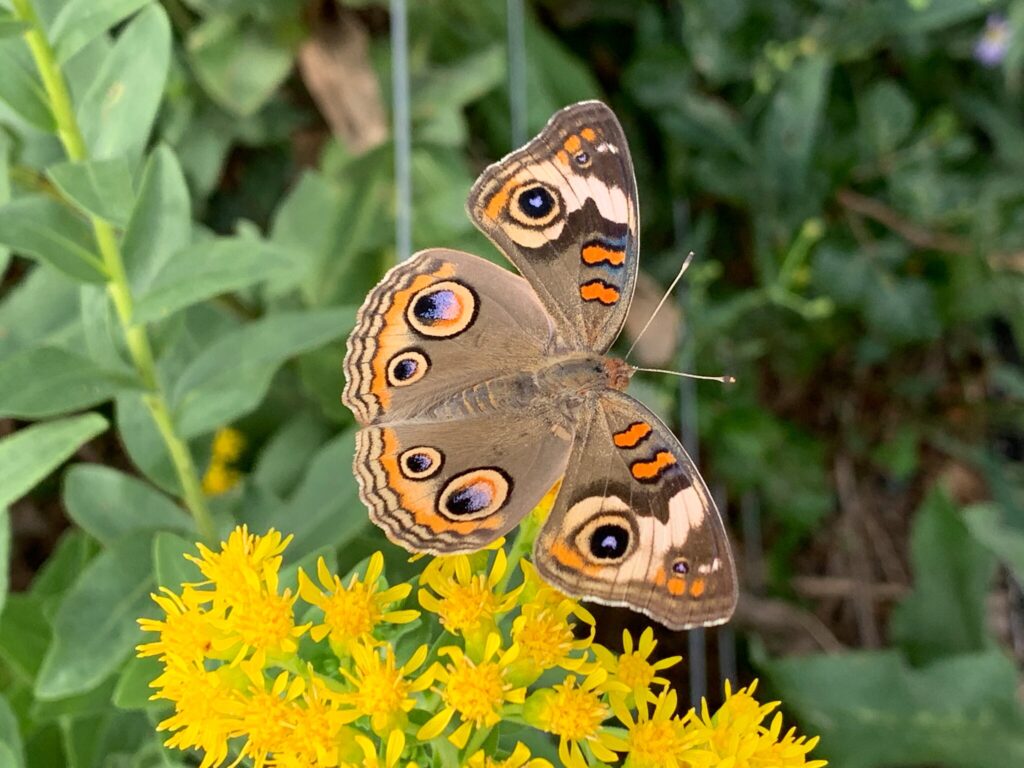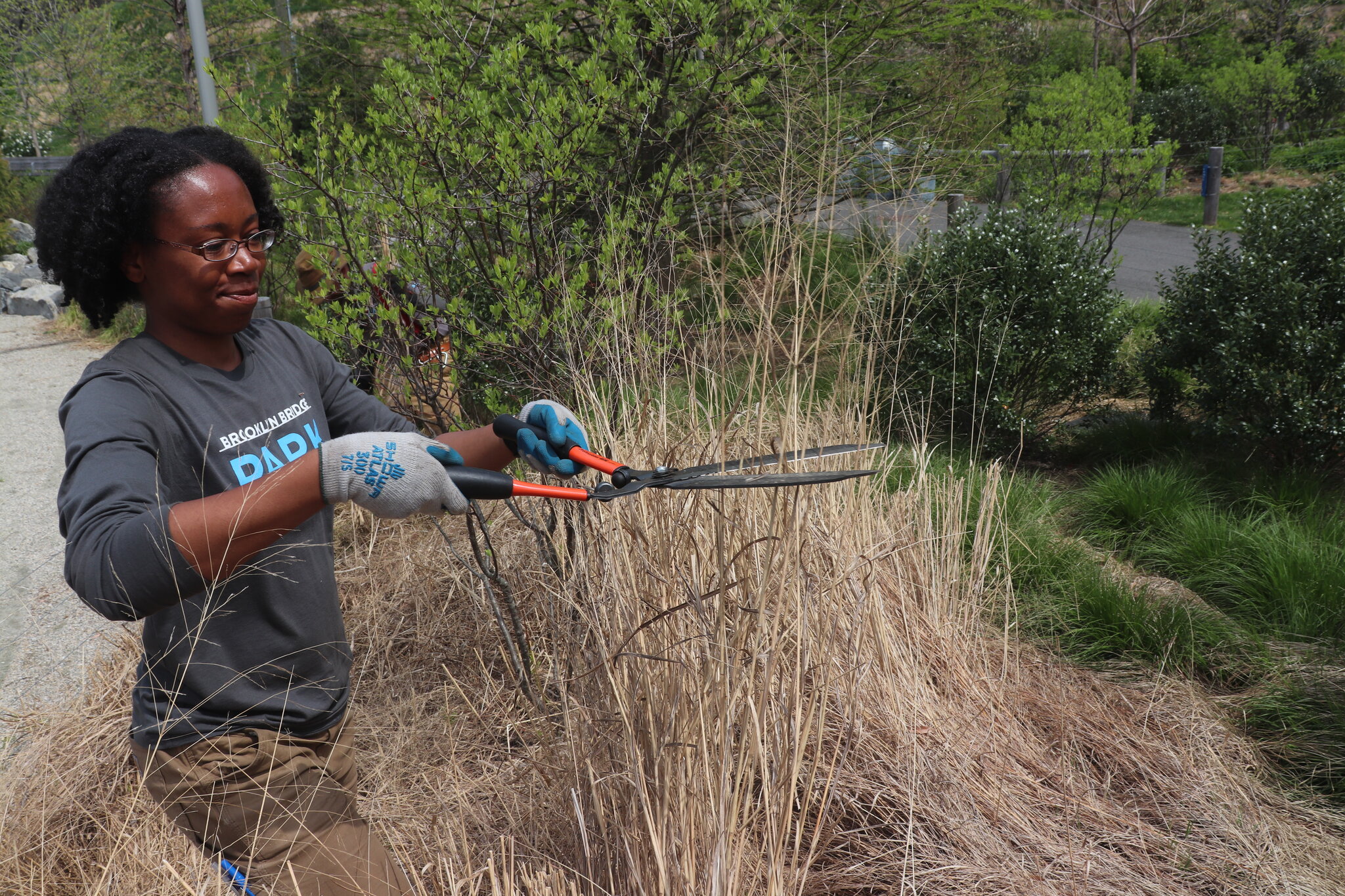photos credit Rebecca McMackin
Gardening is not so much about following rules, says Rebecca McMackin, as it is about following rules of observation. For Ms. McMackin, the director of horticulture at the 85-acre Brooklyn Bridge Park, that means keeping in mind goals that will support wildlife in the garden, and the greater ecology.
Rather than following the common practice of planting and transplanting in spring, for instance, she suggests shifting virtually all of that activity to autumn — and not cutting back most perennials as the season winds down.
Before you act, she said, you should question why a task is necessary, and if you really need to do it at all.
“Why do we do fall cutbacks?” she asked herself, considering the park’s 16 acres of beds, and realized she had no satisfactory answer. “Why do we plant so much in spring? And why do we hear so much about ample spacing and airflow around plants when, if you look at a meadow, that’s not what you see the plants doing?”
After examining and challenging a number of horticultural wisdoms, she found that some were helpful and others were not.
[A jumble of Eupatorium and asters at Brooklyn Bridge Park in late summer. The park, visited by more than five million people a year, rose from an abandoned industrial site, built on reclaimed shipping piers along 1.3 miles of the East River.]
All this talk of ecology and wildlife is a little startling when you consider that the park, visited by more than five million people a year, rose from an abandoned industrial site. It is built on reclaimed shipping piers that stretch along 1.3 miles of the East River on the Brooklyn side of the bridge, following a design by the landscape architects Michael Van Valkenburgh Associates.
Much of what forms the hills, meadows, lawns and soccer fields began with infill salvaged from other city projects. But in just 11 years since the first section opened, the place has become a refuge and breeding ground for diverse and unexpected species. The state-threatened golden northern bumblebee (Bombus fervidus) can be seen happily collecting nectar on wild bergamot (Monarda fistulosa), while nearby, fluttering swarms of the common but colorful little pearl crescent (Phyciodes tharos) are delighted to find so much of their host plant, smooth aster (Symphyotrichum laeve), to savor.
[In the Main Street section of the park, a maze of switch grass (Panicum virgatum) is framed by a honey locust branch (Gleditsia triacanthos), with the bridge visible beyond.]
More than 180 species of birds have been sighted in the park. And not just the mallards and herring gulls that you might expect on a waterfront, but swallows, woodpeckers and rare sparrows, as well as 31 species of warblers. An extremely rare painted bunting (Passerina ciris) spent two months in the park one winter.
If the practices employed by Ms. McMackin and her horticulture team — about 20 gardeners in peak season — can transform reclaimed shipping piers, imagine what they could accomplish in your backyard.
How you care for a garden, they believe, should be organic, yes, but also dynamic — taking cues from the reproductive and migration habits of key bird and insect species — rather than focused on rote tasks performed in the same order every year.
[Ecological horticulture is the mandate at Brooklyn Bridge Park, to support diversity. Gardeners cut back grasses on a berm on Pier 5, to make room for creeping phlox (Phlox subulata)]
Letting Go of Control
Gardening is a practice, Ms. McMackin said, “and like any practice it is based on traditions passed down from previous generations.”
But here’s the hitch: “The problem is that many of those people who started the traditions lived in Europe or England several hundred years ago, and kept topiary. They were great at growing plants from all over the world — in foreign environments — and making them do crazy things.”
No criticism intended. Ms. McMackin is an admirer of such horticultural feats. One of her two master’s degrees is in landscape design. The other, however, is in biology, and that’s the training she taps into to lead the decision-making process these days.
The practice she adheres to is called ecological horticulture. It’s the polar opposite of the purely ornamental version, which is driven by asserting control of plants in the name of aesthetics.
“Ecological horticulture is animal-centric,” she said. “We encourage the dynamic between plants, wildlife and soil, and strive to figure out how to get those plants to thrive independently of our care. We cultivate gardens with high levels of biodiversity and ecological functionality that can help repair the damage done to this land.”
[Asters and goldenrods are two powerful native late-season perennials at the park that sustain pollinators and birds with their seeds.]
Fall Is for Planting
So many traditional horticulture practices, and much of the horticulture industry, are organized around the focus on spring planting. Wholesalers propagate plants to be ready then, and retailers stock up, preparing to meet pent-up demand from winter-weary consumers.
But is spring really the best time for planting, to foster success either horticulturally or ecologically?
Spring planting “gets in the way of our work, instead of complementing it,” Ms. McMackin said. And in the past four years, her crew has gradually phased it out. Next year, there will be no spring planting at Brooklyn Bridge Park, except for some tree species that resent fall root disturbance.
“When we do plant in spring, and then summer arrives, it can be such an extreme environment — hot, dry and windy, too,” she said, and those are hard conditions for plants trying to root in. With a fall planting schedule, the winter that follows is easier on them.
Spring planting is tough on gardeners, too, who have to keep after new installations with regular watering, or risk losing them. Fall planting gives plants time to establish themselves, and some are fully settled by the following summer, so watering isn’t needed then. Peak planting time at the park is from late September through early October or so, with grasses going in earlier in September, for extra rooting time.
“If you time it right,” Ms. McMackin said, “sometimes you only have to do a month of watering, and then walk away from the plant.”
And there’s a bonus: With the staff no longer on hose duty all spring and summer, they have more time for that all-important task that must not be postponed: weeding.
“In May and June, instead of planting, we can get weeds while they’re still small,” Ms. McMackin said. “You can hoe rather than having to hand-pull — getting rid of things that can cause massive problems later, if you don’t.”
[An American lady butterfly on young pearly everlasting transplants (Anaphalis margaritacea), one of its host plants. The park’s gardeners learned the hard way to plant in the fall, rather than the spring, when the butterflies lay eggs.]
What the Butterfly Told Her
Learning to read wildlife’s signals requires experimentation. Following good scientific methods, no project is undertaken at the park without a small-scale test first.
The value of watching and learning was underscored resoundingly when planting began in support of American lady butterflies (Vanessa virginiensis). In northern areas, pearly everlasting (Anaphalis margaritacea) and pussytoes (Antennaria) are the butterfly’s larval hosts, so for the test phase Ms. McMackin ordered a few flats of plants one spring. It backfired.
“We opened the boxes and, as if out of nowhere, these butterflies started showing up and ovipositing — laying their eggs on the new plants,” Ms. McMackin said. “We thought it was amazing and magical, and we planted the egg-covered plants. But then the caterpillars hatched and ate them — and they ran out of food and died. It was terrible.”
So the plant order they placed for the real project was timed to arrive in autumn, she said: “Fall is not when the butterflies are looking to oviposit. Plants will have time to establish before butterflies descend on them in spring, and we’re planting in numbers large enough that caterpillars will have enough food.”
The gardeners are also conscious of how animals use the park in each season. When they saw migratory birds picking over spent goldenrod on one pier in fall, native beautyberry shrubs (Callicarpa americana) were added to supplement the feast — but planting didn’t begin until the birds had moved on to their winter haunts.
“So much of this work is the result of the gardeners’ passion and efforts,” Ms. McMackin said. “They’re the people out observing who’s visiting flowers and eating berries.”
[A common buckeye butterfly enjoys some goldenrod (Solidago) at Brooklyn Bridge Park in late summer.]
A Shift in Cleanup, Fall and Spring
At Brooklyn Bridge Park, the gardeners skip most of the traditional fall cutbacks and cleanup. That leaves plenty of seed that can self-sow, or be eaten by birds, and preserves an overwintering habitat in the leaf litter for arthropods. Except where mulch or compost is needed, the approach is hands-off.
But while the overriding mandate is “leave the leaves,” some nuance is required, Ms. McMackin said. Too thick a layer of oak or Magnolia grandiflora leaves, both slow to break down, can smother small herbaceous plants. In some cases, the gardening crew may thin them, moving debris around a bit or composting some of it.
And where disease has occurred, they intervene. “We remove the duff layer under plants that have pests or diseases that could spread,” Ms. McMackin said. Infected material is replaced with mulch or excess leaves shifted from elsewhere.
[Christina Severin, a gardener at Brooklyn Bridge Park, cuts back switch grass (Panicum virgatum). Debris from plants that need cutting back in the fall or spring is not raked up and carted away; plants are chopped in increments of six inches so, and the pieces are left on the ground as mulch]
Come spring, anything that must be cut back is trimmed in six-inch increments. The chunks are allowed to fall to the ground as mulch, not carted away.
“I must have seen 40 pearl crescents the other day,” Ms. McMackin said last week, crediting the abundance to a combination of two things: having thousands of host plants and not raking out the duff layer where larvae might overwinter. “It really might just be that simple.”
Sometimes, though, it seems more like so many little miracles.
“We just had an endangered sedge pop up. And we had a state-threatened saltmarsh aster appear that we relocated to our salt marsh,” she said. “It’s amazing what happens when ‘Leave things alone as much as possible’ is part of your maintenance strategy.”
Margaret Roach is the creator of the website and podcast A Way to Garden, and a book of the same name.


